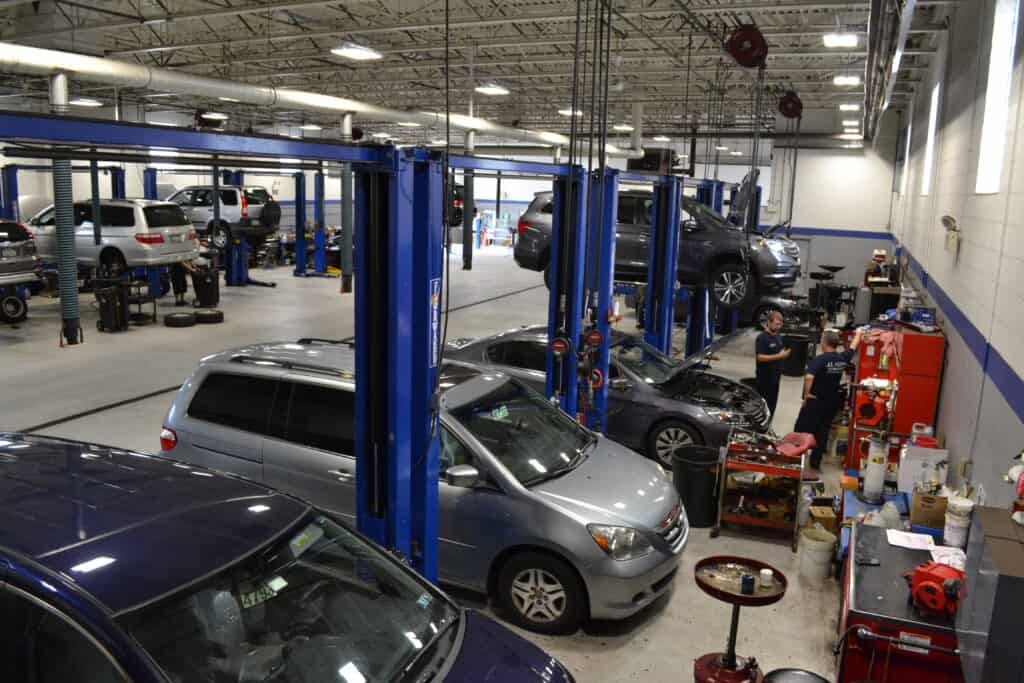Fix it correctly the first time
A cooling system classroom lesson
By Christopher J. Holley, MACS Contributing Editor
A 2017 Accord with an overheating 2.4L engine arrived at our college lab. The customer had a limited history of the newly acquired vehicle other than “some work was recently performed.” The odometer showed 180k-miles. A quick check found no recalls and technical service bulletins concerning overheating, but a 13-step engine overheating diagnostic chart was obtained.

A second-year student, Jim, verified the complaint by topping off the coolant in the reservoir and warming up the engine. After about ten minutes, the engine temperature PID on the scan tool rose quickly from its steady number of degrees, and correspondingly, the coolant rapidly escaped from the reservoir. The engine was cooled, and additional coolant was added into the radiator (the radiator cap was left off). The refill process was repeated several times, and each time, the engine temperature would spike, followed by coolant erupting from the radiator. The coolant expulsion did not have a noticeable pattern, and for the last thirty minutes of run time, no problems occurred.
Jim followed the steps of the diagnostic chart. There was a pressure check for coolant leaks, an inspection of the radiator and condenser for airflow impediments, fan shroud damage, and the coolant was verified with a refractometer. The radiator cap was pressure tested, the thermostat was removed and heated in a container of water, and lastly, the heater core and hoses were inspected for blockages. Everything passed.
Jim asked for a 5-gas machine to test for exhaust gasses escaping from the radiator filler neck caused by a damaged head gasket. I looked over the diagnostic chart and asked, “How did you get to step 13 without performing step 10?” Jim stated, “The water pump looks brand new, so I skipped that step.” I instructed Jim to remove the accessory belt and rotate the water pump pulley counterclockwise. The pulley spun freely and smoothly. I asked Jim to reinstall the accessory belt, restart the engine, and run it until the radiator’s coolant escaped. After ten minutes, the coolant again rushed out. Again, I had Jim remove the accessory belt and retest the pump pulley’s rotation. This time, it required substantial effort to spin the pulley, and the rotation felt “gritty.”
Removing the water pump revealed severe impeller and shaft damage. The impeller spun with the shaft; however, it could be manipulated to wedge against the pump housing, which would reduce or stop its rotation. The impeller could be pushed back from the housing returning to an interference-free rotation. Although the pump was relatively new, it appeared to be a cheap rebuild. To properly fix the Honda, Jim installed a new water pump, flushed the cooling system, and poured in Genuine Honda coolant type 2. Since the repair, the Accord has accumulated 5,000 trouble-free miles. There are two takeaways from this repair. First, do not skip diagnostic steps and assume a part is suitably operating because it looks new. Second, use the right replacement components for the job.
Email us at macs@macsmobileairclimate.org
Visit us at www.macsmobileairclimate.org
You can call the MACS staff at 215-631-7020 M-F form 8:30am-5pm EST.

Leave a Reply